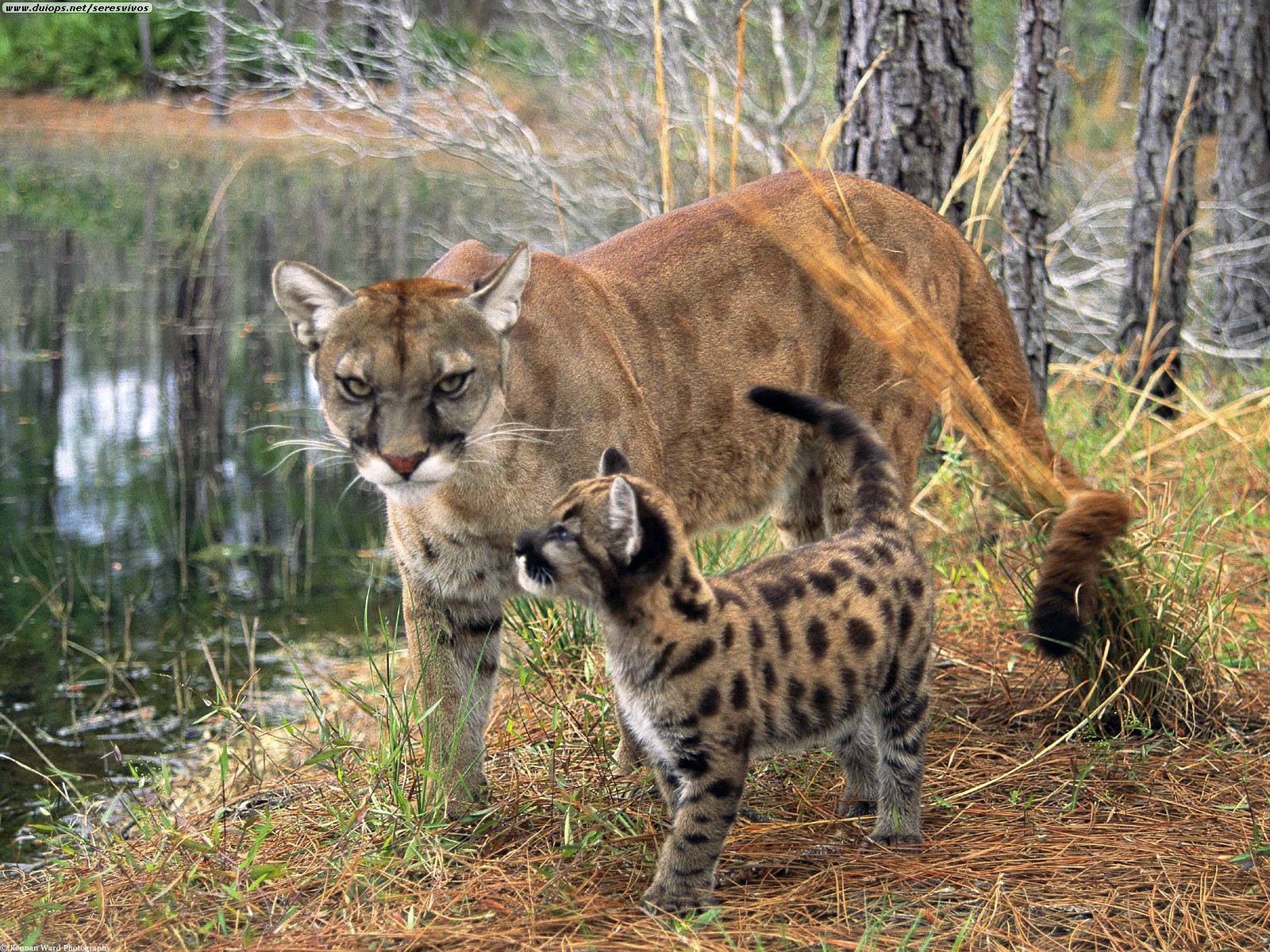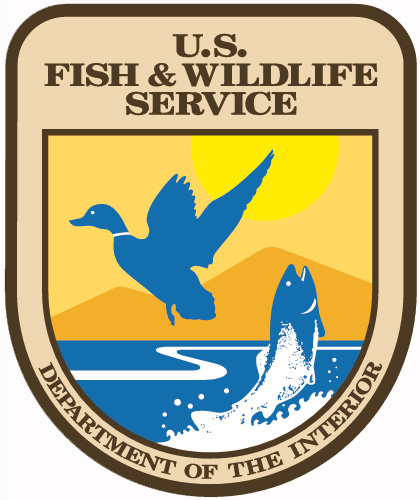By Kevin Sun
Bio 227
https://www.geocaching.com/seek/cache_details.aspx?
wp=GC4JY3C&title=dwt-florida-panther&guid=0d5119e6-1bd5-4df0-a965-6fa893fcb66f
Ecology/Description
The puma concolor coryi, more commonly known as the Florida panther, is a carnivorous species that can be found roaming in both the wet swamps and dry forests of Southern Florida. Its preferred habitat is the forest. The territorial Florida panther is a subspecies of cougar unique to the South-East of America and has adapted to its tropical climate. When not feasting on its primary preys the feral hog and the white-tailed deer, the Florida panther spends the majority utilizing its forest habitat hiding and is seldom seen in the wild. Adult Florida panthers are known to grow up to 7 feet long and can weigh up to 160 lbs. Aside from its white stomach, the feline possesses a beige coat of fur with small portions of black highlighting its pointed ears, round snout, and lengthy tail. Unique to its subspecies, the Florida panther can be distinguished from other subspecies of cougar by its crooked tail and nonconforming patch of hair on the back. The lifespan of a Florida panther averages to 12 years, however, many Florida panthers do not live to this age due to a lack of genetic diversity. The Florida panther is classified as a generalist species and are K-strategists. When giving birth, the Florida panther ranges from 1 to 4 kittens and will remain with their mother for 2 years.
Habitat of the Florida panther
http://www.arkive.org/puma/puma-concolor/image-G5700.html
Panther kitten
https://flypanther.files.wordpress.com/2013/09/babypanther.jpg
Once a species highly plentiful in the early 1600 has now only a small population of 100 to 180 Florida panthers. The introduction of agriculture and city development have greatly modified the home of the Florida panther. An increase in the clear-cutting of forests have destroyed the very forests that offer the Florida panther protection and shelter. The Florida panther's current population size has shown a noticeable increase since its population of 12 - 20 recorded in the 1970s.
Habitat zones of the Florida Panther
https://upload.wikimedia.org/wikipedia/commons/f/f9/FloridaPantherHabitat.png
With a immensely low population of 12 - 20, the Florida panther was listed on the endangered species act on 03/11/1967 by the U.S. Fish and Wildlife Service. Listed as an endangered species, the Florida panther has remained on the list since its firsts listing. The status of the Florida panther has also remained unchanged. Protection of the Florida panther is enforced everywhere the species can be found.
Logo of U.S. Fish and Wildlife Services
http://oklahomafarmreport.com/wire/news/2011/06/media/01757_us-fish-and-wildlife_logo.jpg
Causes of Listing and Main Threats
The poor condition of the current population of the Florida panther is contributed heavily by habitat destruction and health issues. The causes of the subspecies' poor health can be traced to its low existing population, causing low genetic diversity and susceptibility to disease. Low genetic diversity is a result of inbreeding which has also lowered sperm quality, ultimately leading to a lower fertility rate. In a Florida panther biomedical investigation conducted by M.E. Roelke, it is concluded that the Florida panther has lost half of its genetic diversity due to low heterozygosity levels. The Florida panther is victim to mercury poison in areas around Everglade. It is believed to affect panthers who have preyed on raccoons who posses high amounts mercury from bioaccumulation of aquatic animals. The rising population of Florida has already peaked 17 million people and has prompted the need of urbanization. In order to sustain a population, area for agriculture must be added. In doing so, natural habitats that one thrived in Florida are being undermined. Urbanization and agriculture expansion has resulted in converting natural habitat into urban areas of settlement. Highways and cities have fragmented existing habitats, thus weakening the ecosystem the Florida panther resides in. Hunting of the feline before the 1900's greatly reduced the population as well. Farmers were fearful of the both the Florida panther itself as well as its potential to cause damage to livestock.
Orlando, Florida
Demonstration of Urbanization
http://www.monsterdisplays.com/v/vspfiles/assets/images/orlando-fla.jpg
The goal of the recovery plan assigned to the Florida panther is to achieve a self-sustaining population of the subspecies. The plan further aims to expand the panther's habitat to areas beyond south Florida and educate the public about the Florida panther. A healthy, self-sustaining population of the Florida panther is achieved when the population has a 95% of persistence for the following 100 years according to the US Fish and Wildlife Services. In order to achieve such results, habitat conservation and reduction of habitat related threats are the center of focus. To reduce the amount of deaths caused by cars, fences will be installed around key areas along highways to prevent the endangerment of motor vehicles. A group of southern Florida land managers will be assembled to make enforce habitat management. The knowledge and understanding of the subspecies is key to the recovery of the Florida panther. The local people who share land with the Florida panther must understand the importance of the animal. The people must know that there is a problem and that their cooperation is necessary to save the Florida panther. It is important to focus on saving the ecosystem that the Florida panther lives in as well for doing so will benefit other species who share a habitat with the Florida panther.
Personal Action
I will personally educate the family and local people in my community about the endangered status of the Florida panther. I hope that this blog can reach the people who are more directly connected to the Florida panther. The first and most important step is acknowledging there is an issue and educating others so that they can contribute to the recovery of the Florida panther. I will share my blog amongst forums and social media. I will also implement a hashtag so those who have questions regarding the panther can contact me as well as share their thoughts on the issues.
Work Cited
"Basic Facts About Florida Panthers." Defenders of Wildlife. N.p., 21 Mar. 2012. Web. 20 Nov. 2015. <http://www.defenders.org/florida-panther/basic-facts>.
"FLORIDA PANTHER." FLORIDA PANTHER. N.p., n.d. Web. 21 Nov. 2015. <http://www.floridapanther.com/articles/FLORIDA%20PANTHER.htm>.
"Florida Panther - Florida Panther - U.S. Fish and Wildlife Service." Florida Panther - Florida Panther - U.S. Fish and Wildlife Service. N.p., n.d. Web. 20 Nov. 2015. <http://www.fws.gov/refuge/florida_panther/wah/panther.html>.
Roelke, M.E. 1990. Florida panther biomedical investigations. Final performance report, July 1, 1986 to June 30, 1990, study no. 7506. Florida Game and Fresh Water Fish Commission; Tallahassee, Florida






I like the way you labeled each section to break the blog into important key points. Great job! Don't forget to comment. #BIO227Fall2015
ReplyDelete